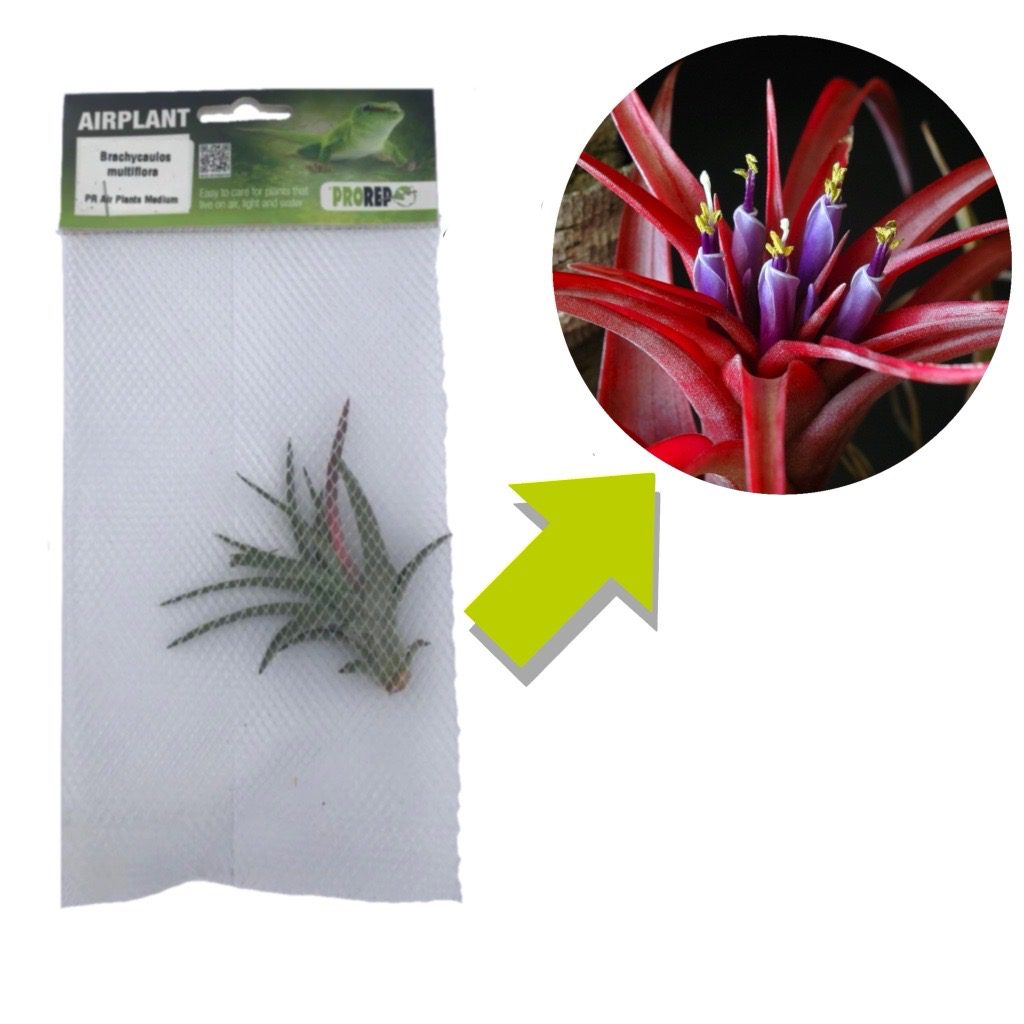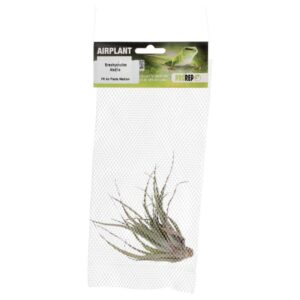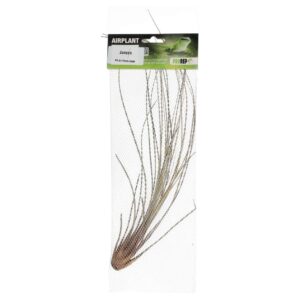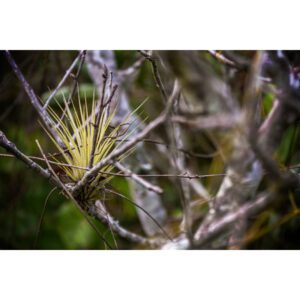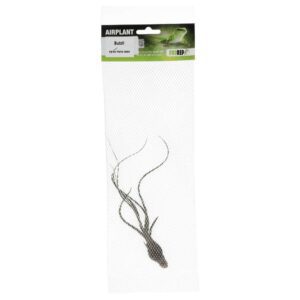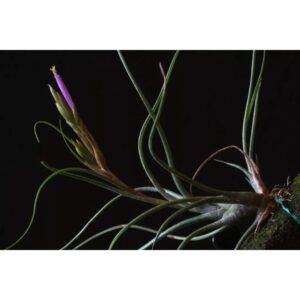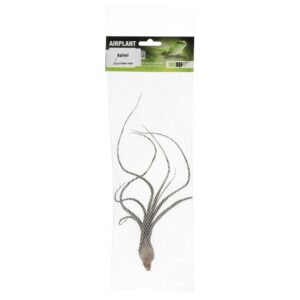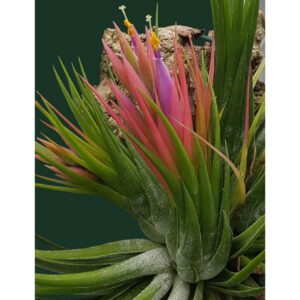Brachycaulos multiflora
Mature Appearance:
Small rosette (~6–8 cm across) of firm, spatulate leaves that emerge olive‐green and develop pink/purple hues under bright light.
Compact, mound‐forming habit; leaves slightly stiff, with a pale fuzz (trichomes).
Bloom spike slender (~8 cm) bearing pink bracts and small purple flowers.
Life Cycle:
Blooming: Blooms 1–2 years after establishment.
Pups: Produces 3–5 pups forming a cluster around the mother’s base.
Mother Senescence: Mother fades as pups grow; pups take 6–12 months to reach flowering size.
Enclosure Use:
Best Fit: Smaller arboreal or semi‐arboreal enclosures (e.g., small geckos, young arboreal snakes, dart frogs).
Mounted on bark or cork tiles at mid‐level to catch moderate humidity.
The tight cluster helps juvenile animals find shelter behind its leaves.
Care:
Light: Bright, indirect to moderate (200–400 µmol·m⁻²·s⁻¹). Avoid direct midday sunlight.
Water: Mist twice weekly; soak 10–15 min weekly. In lower‐humidity rooms, mist more frequently.
Airflow: Moderate—place near a small vent or fan.
Temps: 18–26 °C; protect from prolonged cold (<15 °C).
Overview of Enclosure Placement & Compatibility
Arboreal Reptiles (Geckos, Tree Snakes, Chameleons): Mount mid‐ to upper‐level on cork bark or natural branches—air plants stay dry at leaf tips and provide perches.
Paludariums (Dart Frogs, Newts): Position so bases are above standing water but within mist zones; high humidity helps their growth and stability.
Terrestrial Reptiles (Small Tortoises, Skinks): Generally, avoid placing air plants on floor substrate where they stay too wet. Instead, mount on vertical surfaces.
Nocturnal Reptiles (Crepuscular Geckos, Tree Frogs): Many Tillandsias thrive in lower‐light understory conditions—select varieties like Ionantha scaposa or Brachycaulos multiflora that tolerate moderate light.
Basic Care Tips for All Tillandsias in Reptile Enclosures
Light: Most need bright, indirect light; avoid full midday sun inside a glass vivarium to prevent heat buildup.
Watering:
Misting: Use a fine‐mist sprayer; wet entire plant until beads form on leaves.
Soaking: Remove and soak in dechlorinated, room‐temperature water. For large species (e.g., T. fasciculata), soak 20–30 minutes; smaller ones 10–15 minutes.
Frequency: In a high‐humidity vivarium (≥70% RH), misting 2×/week may suffice. In drier rooms, mist 3–4 times weekly with a weekly soak.
Airflow: Ensure leaves dry within 4–6 hours to prevent rot. Use vent fans or leave enclosure slightly ajar after misting.
Temperature: Most thrive between 18–28 °C. Avoid prolonged humidity with temperatures >30 °C, which can lead to fungal issues.
Fertilizer: Optional: use a bromeliad or tillandsia‐specific foliar fertilizer at ¼ strength once a month during active growth. Rinse thoroughly after to prevent residue.
Mounting & Display:
Attach using fishing line, thin wire, or high‐temp silicone to cork bark, rock, or driftwood. Do not use glue that can leach toxins.
Position so water does not pool in leaf rosettes—provide an angle or slight tilt to assist drainage.
By integrating these air plant species into your reptile vivaria, you create a more natural, three‐dimensional environment—offering climbing surfaces, humidity buffering, and visual interest—while providing minimal maintenance needs. Proper placement, regular but moderate watering, and good airflow will ensure your Tillandsias thrive alongside your reptiles.
SKU: PPA020
PR Airplant Med. Brachycaulos multiflora
£5.49
Air plants provide long lasting natural decor for terrariums and can be attached to vines, stones, trunks, in fact almost anything for a naturalistic finish.
Additional information
| Brand | ProRep |
|---|



